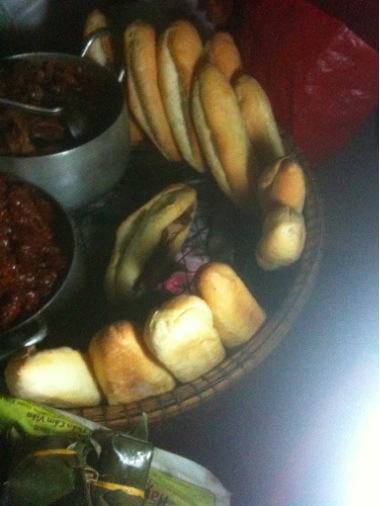Six royal tombs are scattered across land to the south east of the citadel on the other side of the Perfume River and one on the same side. They are monuments to nine of the thirteen rulers of the Nguyen Dynasty, mostly built during the Emperor’s lifetime. Although designed individually, sometimes by the intended occupant himself, they share certain design conventions.
All were built according to strict rules of geomancy, which often involved making substantial modifications to the landscape to ensure that the sight lines and orientation of the constituent elements complied with celestial and supernatural forces. These were:
• a courtyard with stone effigies of elephants, horses and mandarins
• a pavilion containing a massive stele with eulogies to the departed incumbent
• a temple containing an altar for worshipping the Emperor’s soul
• a pleasure pavilion, and
• the tomb itself
Each Royal Tomb reflects the personality of the ruler.
We were lucky to be shown around by a local from Hue, Lan. I found Lan on couchsurfing and am so glad that I did. Besides being a terrific person and great tour leader, she also shares my love of food and took me to some real local spots for delicious Hue specialties.
Tu Duc:
The tomb of Tu Duc, the ‘poet Emperor’, is set in an elegant garden with a magnificent lake and pavilion complex. The centrepiece of the tomb is simplicity itself despite the lavish opulence of his reign (it’s really just a monument – he was buried elsewhere to thwart grave robbers).
Despite his cultural pursuits and desire to achieve a humble lifestyle, it was under Tu Duc that the Nguyen court reached its zenith of lavish opulence. Tu Duc withdrew into court life, seemingly indifferent to the people he ruled, and the brutal treatment of the three thousand artisans and workers pressed into service to build his tomb.










































































